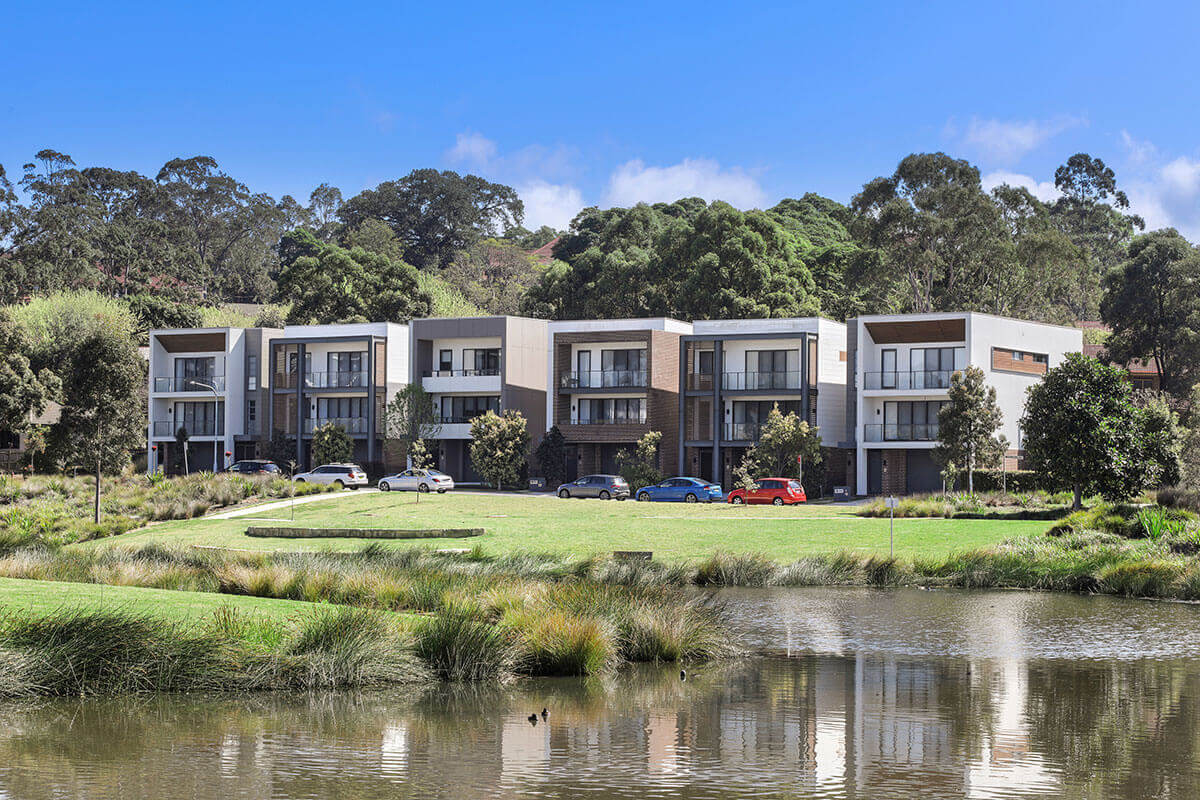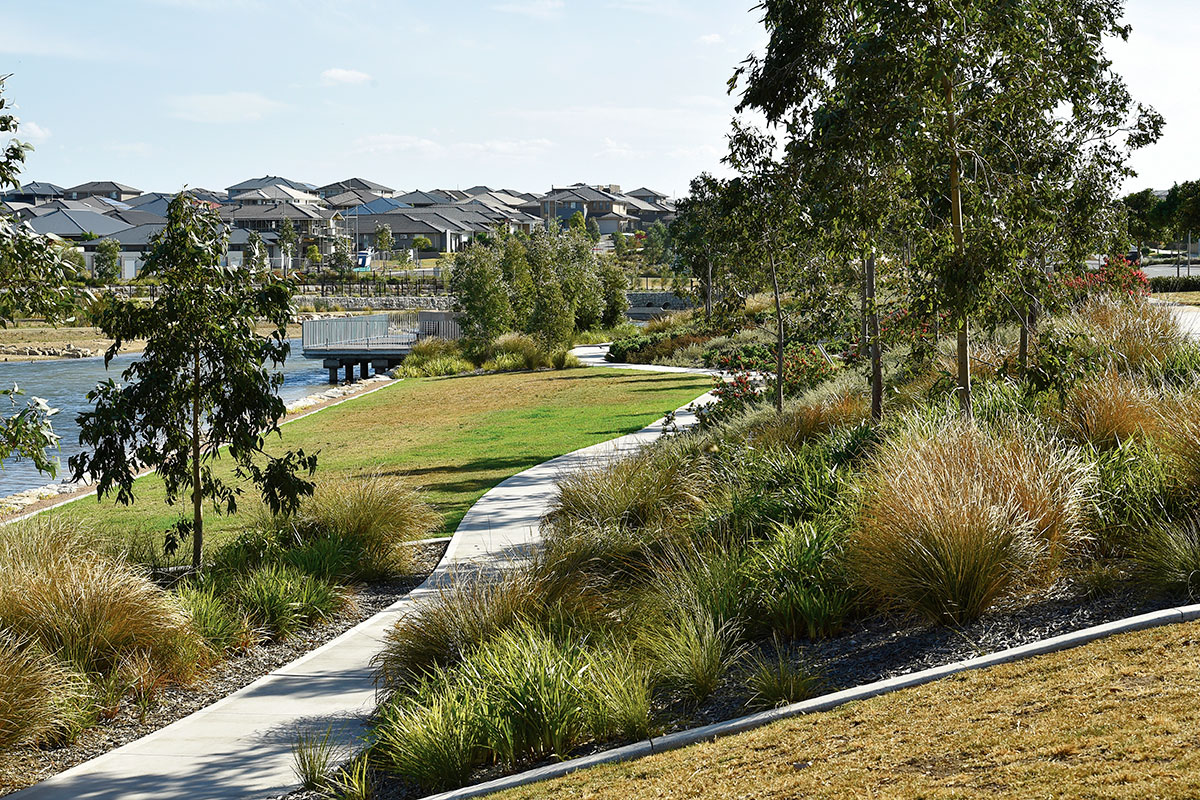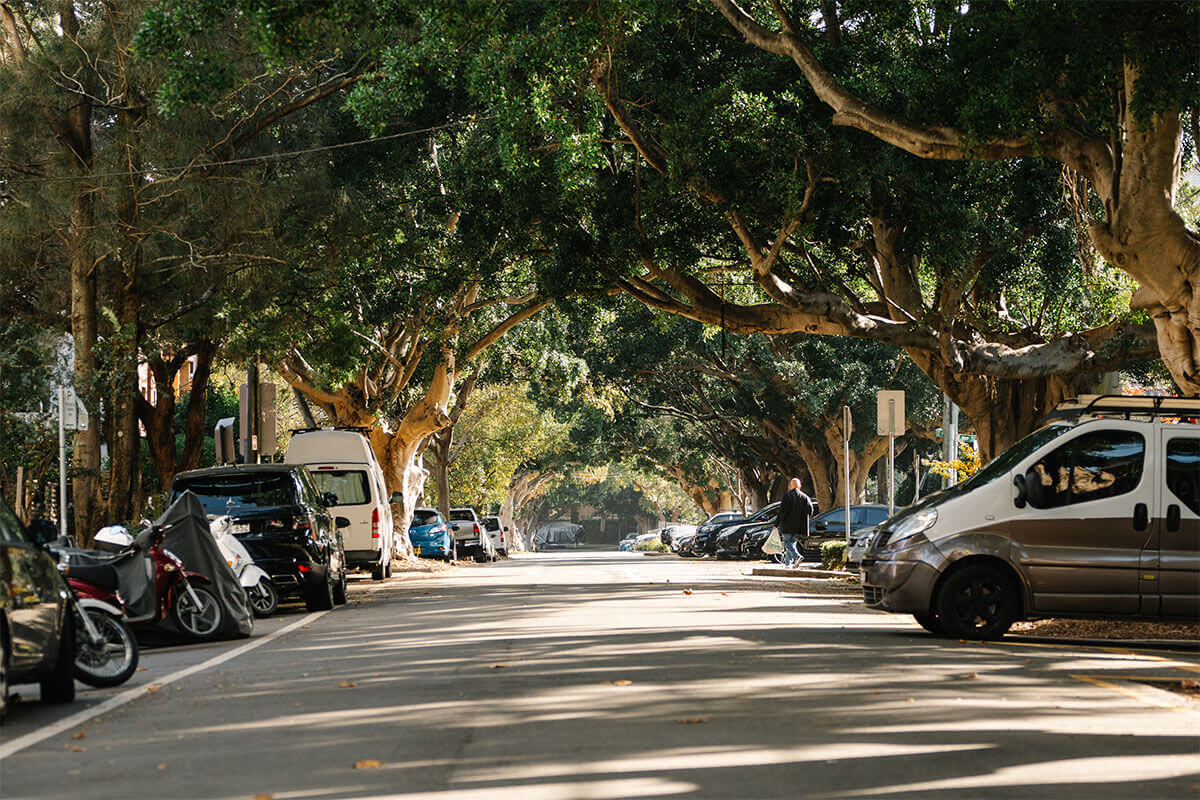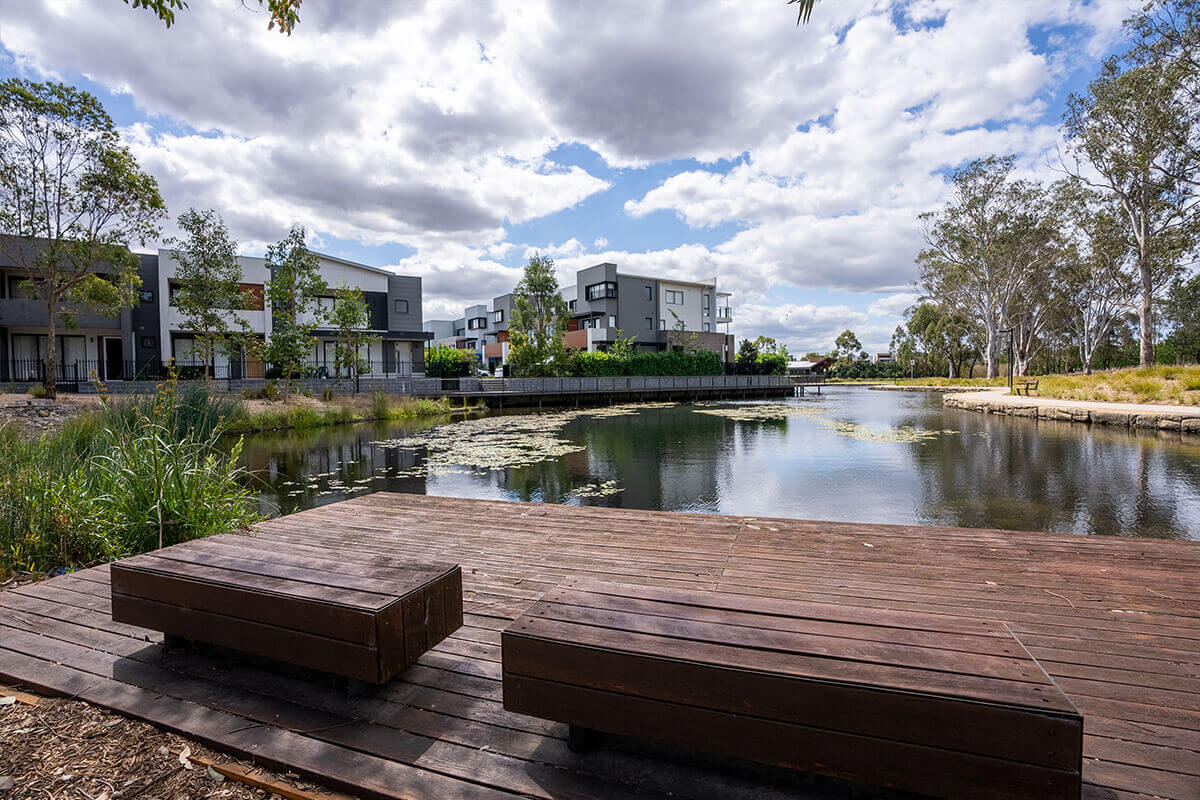Both strategic plans and planning controls have a role to play in creating cooler places.
They can be used by local and state government to set strategic directions for heat mitigation and to provide targeted responses to locally specific issues faced by the communities.
Urban cooling strategies
Urban cooling strategies can be used by councils to set overarching objectives and priorities for heat mitigation and adaptation across local government areas.
Some councils have developed urban cooling strategies that aim to build community resilience by considering heat vulnerability in their local areas and identifying actions that respond to their local context.
For example:
- Penrith City Council’s Cooling the City Strategy is based on robust research and data analysis about how urban heat is affecting the Penrith Local Government Area. It includes a broad range of actions focused on cooling the region, improving liveability, and prioritising heat protection for communities.
- City of Wagga Wagga’s Urban Cooling Strategy 2022-2052 uses remotely sensed data to analyse canopy levels and associated land surface temperature across its local government area. It includes suburb profiles drawing on that data and identifies both cooling mechanisms and a set of actions to meet the strategy’s objectives.
- Waverley Council's Urban Greening and Cooling Strategy sets goals, targets and actions for increasing urban trees and vegetation across both public or private land to enhance climate resilience. It also includes actions to strengthen local planning controls, provide guidance on green roofs and walls and engage the local community in greening activities.
Planning controls
Planning controls offer an opportunity for local and state government to respond to place-specific heat issues and vulnerabilities.
Controls that address urban structure, water, greening and cool materials form part of an interconnected set of controls to address a variety of local planning issues for each area.
Controls that have urban heat mitigation as their primary objective are an emerging area of action for councils and the NSW Government.
For example:
- Penrith City Council has amended its local environment plan and development controls plan to introduce a requirement that the mitigation of the urban heat island effect is a major consideration for development.
- Cumberland Council has also amended its local environment plan to include a requirement to consider urban heat before approving development, and outlines in its development control plan how cooling can be achieved.
- The NSW Government included a heat mitigation section in the Western Sydney Aerotropolis Development Control Plan 2022 (s.2.5.2) with a focus on site layout, the public domain and building design.
Cooler Places provides examples of how planning controls can be used to mitigate urban heat. The examples we have provided are not exhaustive, and we will update this section as new guidance and resources become available.
Case study
Landcom
At the core of Landcom’s Sustainable Places Strategy is a commitment to climate resilience. Urban heat is a particular focus, as it is a key risk for many Landcom communities. Since 2018, Landcom has set performance-based targets for urban heat in greenfield, urban renewal and high-density projects. Read more about Landcom’s Sustainable Places Strategy.
Strategies to cool communities
Landcom integrates cooling strategies into development plans to create more resilient, comfortable communities. Modelling shows that these measures both improve the resilience and lower the cost of living for residents. These strategies include:
- Thoughtfully planned precinct layouts – designing precincts to promote natural cooling through strategic orientation of buildings, streets and public spaces.
- Green Star Certified communities and buildings – achieving Green Star ratings for projects to minimise energy use and prevent heat gain through improved thermal comfort measures (e.g. glazing, insulation), reducing the need for artificial cooling.
- Water-sensitive urban design – applying principles that keep water within the landscape, enhancing cooling through features such as permeable surfaces and vegetated swales (low, moist areas with plants).
- Expanding green cover – increasing green spaces by planting public and private trees, creating green roofs, and preserving mature tree canopies to provide shade and lower ambient temperatures.
Read Cooling Common Spaces in Densifying Urban Environments to learn more about Landcom’s research into creating cool communities.
To read more case studies, go to:
Resources
- Western Sydney Regional Organisation of Councils – Urban Heat Planning Toolkit focuses on how councils can update local planning instruments to include cooling provisions and controls.
- Cumberland Council has amended it's local environment plan to include a requirement to consider urban heat before approving development.




